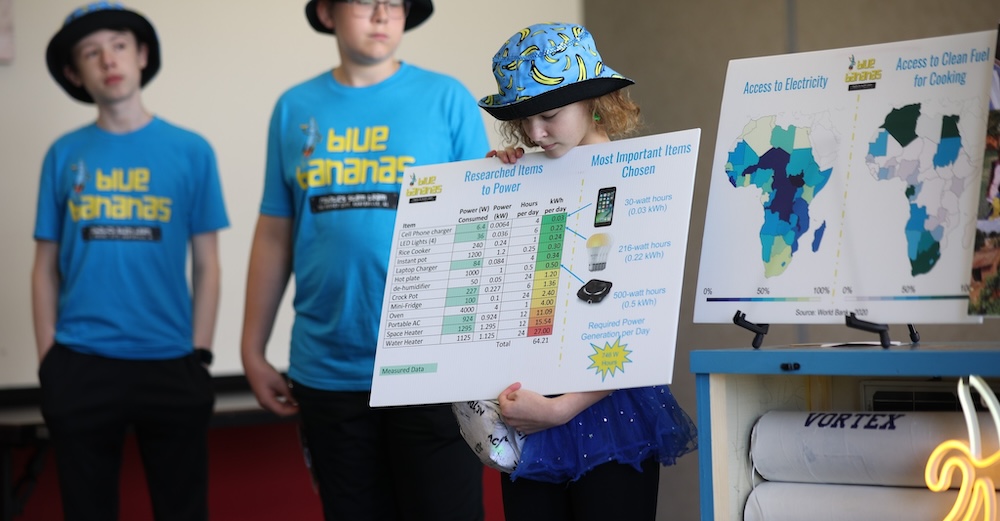Tips for Innovation Project Judging

The students on the team need to create a 5-minute presentation for judges. The format is up to your team. Just remember that you may not have access to electricity/Internet, and you are scored on having an “effective presentation.” No matter what method you use (PowerPoint slides, creative skit, etc.), be sure to cover all the contents of the rubric.
- Identify:
- Incorporate research sources into your script, and make sure you mention a variety of them. “According to the CDC website…” “We did a survey of 300 users and…” “Our expert from P&G said that…” Make sure that your sources are of good quality and specify them (e.g., not just “we did a Google search”).
- Make sure that you clearly state your problem and that it relates to the season’s prompt. Judges may ask you questions about your topic choice. It is your job to convince judges that your topic fits the theme. Pick a problem, then develop a solution for it rather than starting with a solution.
- Design:
- Explain how you developed your idea (e.g., different ideas the team had for the challenge and how one was picked). Also, be sure to discuss a “project plan” (e.g., coming up with goals, tasks, deadlines, and dividing up the work).
- Explain how you developed your idea (e.g., different ideas the team had for the challenge and how one was picked). Also, be sure to discuss a “project plan” (e.g., coming up with goals, tasks, deadlines, and dividing up the work).
- Create:
- Explain your prototype model/drawing. Remember that judges are much older than you are and cannot see text/drawing on a board far away. Bring your prototype or poster board closer and explain (and show).
- Many teams come up with a solution that already exists in the market. Make sure that you discuss why your solution is different or an improvement. You never know who your judge is. They may be an expert in that field, already have a similar device, or read about it in the news. Compare your solution to what exists.
- Iterate:
- Be deliberate about who the solution was shared with and how the solution improved after sharing it (not just names, but also profession or why their feedback is relevant).
- Be deliberate about who the solution was shared with and how the solution improved after sharing it (not just names, but also profession or why their feedback is relevant).
- Communicate:
- Posterboards are not effective unless you use them well. They need to be brought closer to judges, and specific sections need to be pointed out as relevant. Ask to move the table in the room if it needs to be closer to the judges. Consider smaller posters (or props) each student can hold and come closer to the judges. Remember that any visual aid should enhance a presentation, not be the presentation.
- If you use a creative skit, you must ensure that you cover the rubric clearly and that the creative characters and dialogue don’t distract from the rubric contents.
- Students can use simple costumes and props.
- Practice your presentation and ensure it is under 5 minutes (a couple of seconds over is okay). You don’t have to memorize your lines if that’s impossible, but you should engage your judges and keep eye contact (use notes instead of reading where possible). If you forget your line, you can improvise if you know the material or teammates can help.
- Leave nothing behind:
- You can show judges documents, notes, journals, photos, etc. You cannot leave anything behind with them. So, if something is important to the team, show it during the presentation or Q&A.
- You can show judges documents, notes, journals, photos, etc. You cannot leave anything behind with them. So, if something is important to the team, show it during the presentation or Q&A.
- Practice answering questions:
- Team members who are not speaking should still pay attention to their teammates.
- Students should take turns to talk and not talk over each other. Some teams elect a team leader who will distribute questions from judges. Others have pre-assigned experts who will answer based on the content area. Others will raise hands or indicate amongst each other, “I will answer that,” when a question is posed to the group. A second student who wants to contribute an answer might say, “Adding on to that…”.

 Resources
Resources

